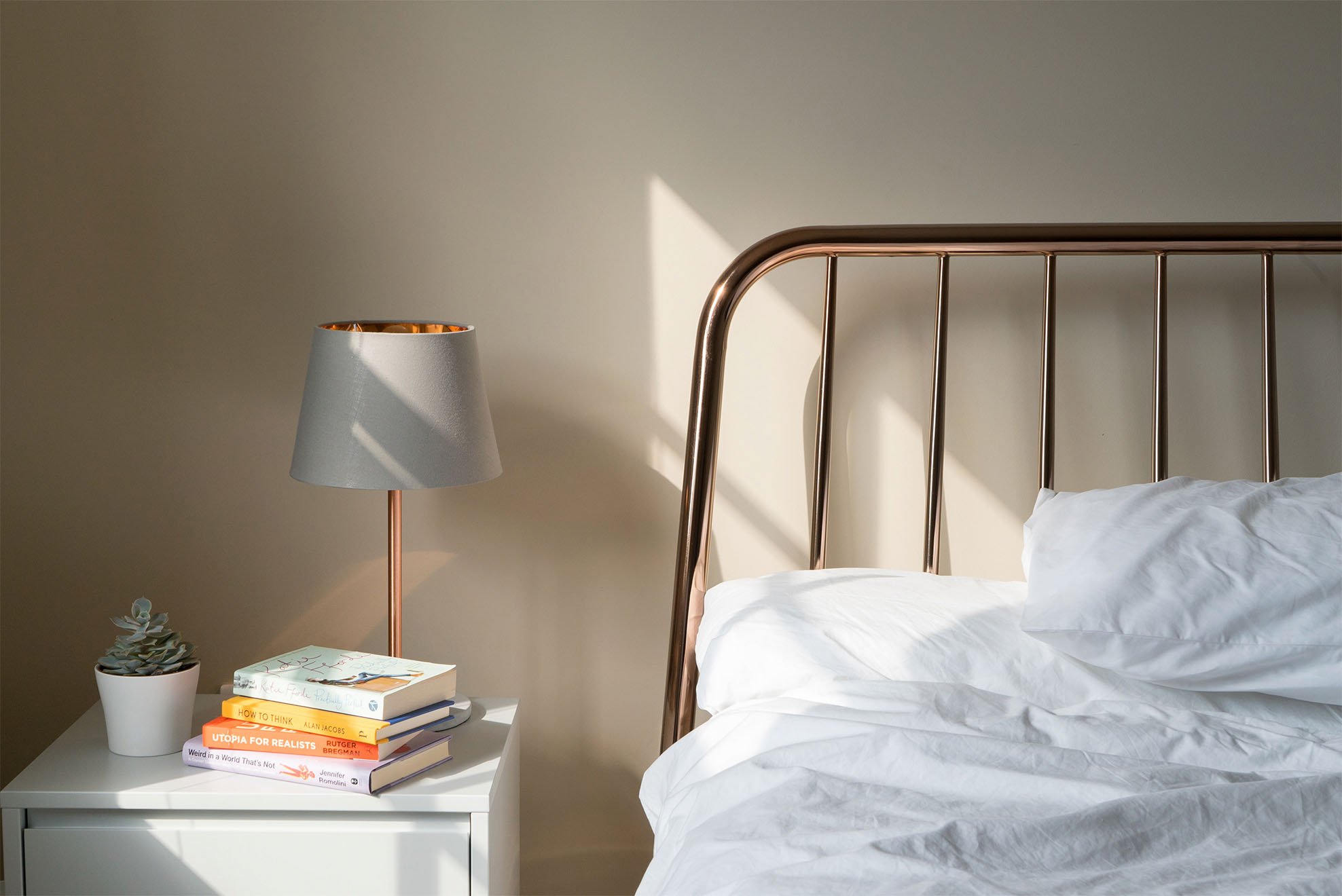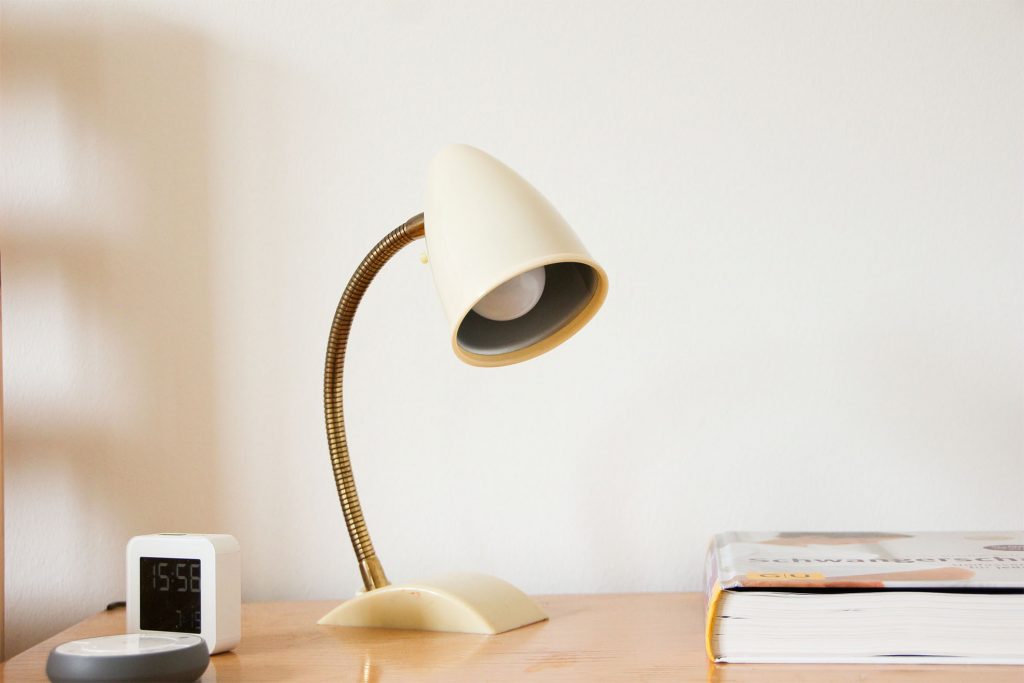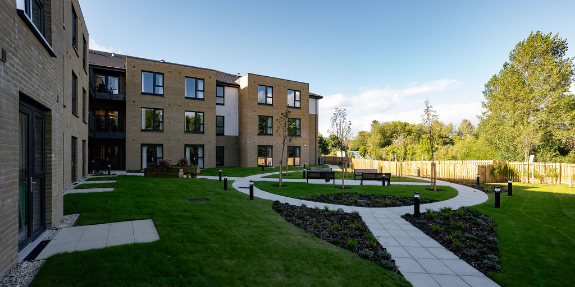How to Make a Care Home Room Feel More Homely

Moving into a care home is a significant life change, and while it can bring safety, support, and companionship, it’s natural to want your new surroundings to feel like home. Creating a homely environment can make all the difference in helping residents settle in, feel comfortable, and maintain a sense of identity.
At Almond Valley Care Home, we understand that a care home room should be more than just a place to stay—it should be a warm, inviting space filled with comfort, personality, and cherished memories. Whether you’re a resident or a family member helping a loved one settle into their new environment, there are many simple and thoughtful ways to make a care home room feel more homely.
Why a Homely Environment Matters
When someone moves into a care or nursing home, they’re not just adjusting to new surroundings—they’re transitioning into a different stage of life. This can be emotional, especially if they’re leaving their own home or parting with long-held possessions.
A homely environment can ease this transition by surrounding residents with familiar items, personal touches, and things that hold sentimental value. These elements promote comfort, emotional wellbeing, and a stronger sense of belonging.
Studies have shown that personalising living spaces in care settings can help reduce stress, improve mood, and promote relaxation. When residents feel truly at home, they’re more likely to engage in daily life, interact with others, and maintain their overall wellbeing.
1. Bring Along Personal Belongings
One of the most effective ways to make a care home room feel more homely is to include meaningful personal belongings. These could be photos, ornaments, keepsakes, or favourite books that remind residents of happy times and cherished memories.
Objects that hold emotional value—like family heirlooms, a treasured photo album, or a special piece of jewellery—can provide comfort and familiarity in a new environment.
If space is limited, consider smaller items that still evoke positive memories. A favourite chair, framed photographs of loved ones, or even memory boxes filled with souvenirs from important life events can bring warmth and personality to any space.
These personal items help to create a familiar space where residents can feel safe, secure, and emotionally connected.
2. Add Comfort Through Soft Furnishings
Adding soft furnishings is a simple yet powerful way to transform a room. Cushions, throws, and curtains in the resident’s favourite colours can immediately add warmth and comfort.
Use throw pillows with different textures, soft blankets for cosiness, and rugs to create a comforting, layered look. Avoid shiny surfaces that can make a room feel clinical—soft, matte fabrics tend to create a calming atmosphere and reduce glare.
If possible, residents can also bring their own bedding or own sheets from home. Familiar patterns, scents, and textures help to recreate the feeling of being in their own home and can make the new room feel instantly more personal.
Adding silk flowers or a vase of fresh blooms can bring natural beauty and vibrancy into the room, helping residents feel more connected to nature.
3. Incorporate Familiar Smells and Scents
Smell is one of the most powerful senses for memory recall. Familiar fragrances can evoke comforting emotions and help residents feel more grounded in their surroundings.
Consider using scented candles (supervised for safety), air fresheners, or reed diffusers with gentle fragrances such as lavender, vanilla, or fresh linen. These familiar scents can help create a calming atmosphere and promote relaxation.
Alternatively, placing a drop of essential oil on a cushion or pillow can create a subtle, long-lasting scent that feels comforting and familiar. For residents who used a particular washing powder or perfume at home, bringing that same scent into their new environment can help them feel settled more quickly.
4. Personalise the Walls with Photos and Art
A blank wall can make a room feel impersonal, so adding photographs, art, and decorations is a wonderful way to make a care home room feel inviting.
Hang pictures of loved ones, family holidays, or special occasions to fill the space with familiar faces and happy memories. These can spark conversations, evoke fond recollections, and make the room feel home.
To keep things safe and accessible, use reflective plastic frames rather than glass and ensure that artwork is securely attached to the wall.
If the resident enjoys art, consider displaying their own drawings or paintings—this adds a deeply personal touch and celebrates individuality.
5. Create a Familiar Layout with Favourite Furniture
If space allows, bringing a few pieces of furniture from home can help to recreate the layout and feel of a familiar setting. A favourite chair, small table, or bedside table can provide continuity and comfort.
Positioning items in similar places to how they were arranged at home—such as placing a reading lamp or clock in a familiar spot—can help residents orient themselves in their new room and feel at ease.
Adding small details, such as a hot drink placed on a familiar table or a photo by the bedside, can make daily routines feel more natural and comforting.
6. Make the Most of Natural Light
Natural light plays a key role in creating a bright, uplifting, and homely environment. It helps regulate mood, supports sleep patterns, and enhances emotional wellbeing.
Whenever possible, keep windows unobstructed to allow plenty of daylight into the room. Choose lighter curtains or blinds that let light filter through while maintaining privacy.
Adding mirrors strategically can also help to reflect light and make the room feel more spacious and welcoming.
If natural light is limited, opt for warm-toned lamps to create a soft, soothing glow that mimics daylight.

7. Add Personal Touches That Reflect Individual Preferences
Everyone has their own tastes and traditions, so it’s important to decorate a care home room in a way that reflects the individual preferences of the resident.
Some residents might enjoy a tidy, minimalist style, while others might prefer a cosier, eclectic look filled with colour and personality. Including personal touches, such as framed poems, cherished belongings, or souvenirs from favourite places, can create a truly unique space that feels genuine and personal.
These little details help residents maintain a sense of control and promote independence, as they can choose how their room looks and feels. This, in turn, supports their emotional well-being and self-identity.
8. Use Music and Familiar Sounds
Creating a homely feel isn’t just about visuals—it’s also about sound. Soft background music or familiar sounds can evoke nostalgia and spark conversations.
A small CD player, radio, or digital music player can be a wonderful addition, allowing residents to listen to their favourite songs or soothing melodies throughout the day. This can help reduce feelings of loneliness and bring a sense of routine and joy to daily life.
The gentle hum of background music can also mask background noise, contributing to a more calming atmosphere.
9. Encourage Family Involvement
Family members play a vital role in helping a loved one settle into their new environment. When relatives participate in decorating or organising the care home room, it helps residents feel supported and connected.
Family visits can be used as opportunities to add new photos, rearrange furniture, or simply spend time reminiscing about cherished memories. This process not only strengthens bonds but also helps create a familiar space that bridges the gap between the own home and the care home.
At Almond Valley Care Home, we encourage loved ones to visit often and become part of the resident’s daily life, ensuring that every room remains filled with warmth, laughter, and love.
10. Incorporate Nature and Calm
Bringing elements of the outdoors inside can greatly enhance the well-being of residents. Plants, flowers, and natural beauty help create a refreshing, peaceful atmosphere.
Low-maintenance plants or silk flowers can add greenery without requiring extensive care. If possible, positioning the bed or chair near a window allows residents to enjoy outdoor views, watch the changing seasons, and benefit from sunlight.
Nature-inspired artwork, such as paintings of local landscapes, can also foster a connection to the world beyond the room, helping residents feel grounded and content.
11. Maintain Familiar Routines and Objects
Moving into a new room can disrupt daily routines, but keeping familiar habits and items nearby can help reduce feelings of uncertainty.
If a resident enjoys reading before bed, ensure their favourite chair, reading lamp, and books are easily accessible. If they have a morning routine of listening to music with tea, make sure their CD player and kettle are within reach.
These small gestures create continuity between life at home and life in the care setting, reinforcing the sense of comfort and belonging that comes from a truly homely environment.
12. Celebrate Milestones and Memories
Personalising a room isn’t just about the past—it’s also about celebrating the present. Marking birthdays, anniversaries, or family achievements with cards, decorations, or small gifts keeps the room lively and filled with love.
Displaying seasonal decorations—such as a wreath in winter or flowers in spring—adds a welcoming touch and helps residents remain connected to the world around them.
This ongoing effort to refresh the space ensures it always feels alive, personal, and cherished.
Creating a Space That Feels Like Home at Almond Valley
At Almond Valley Care Home, we’re passionate about helping residents feel comfortable, valued, and truly at home. Our dedicated team provides exceptional care in a warm and comforting environment, ensuring that each resident’s personal space reflects their personality and life story.
We encourage residents and families to bring along cherished belongings, personal items, and familiar smells to create a homely feel that nurtures emotional wellbeing.
From soft furnishings to favourite colours, and from meaningful photos to practical tips for creating comfort, we believe that small details make a big difference in turning a care home room into a place where residents truly feel at home.
Because home is more than just a place—it’s a feeling of safety, love, and belonging. And at Almond Valley Care Home, that feeling is at the heart of everything we do.






